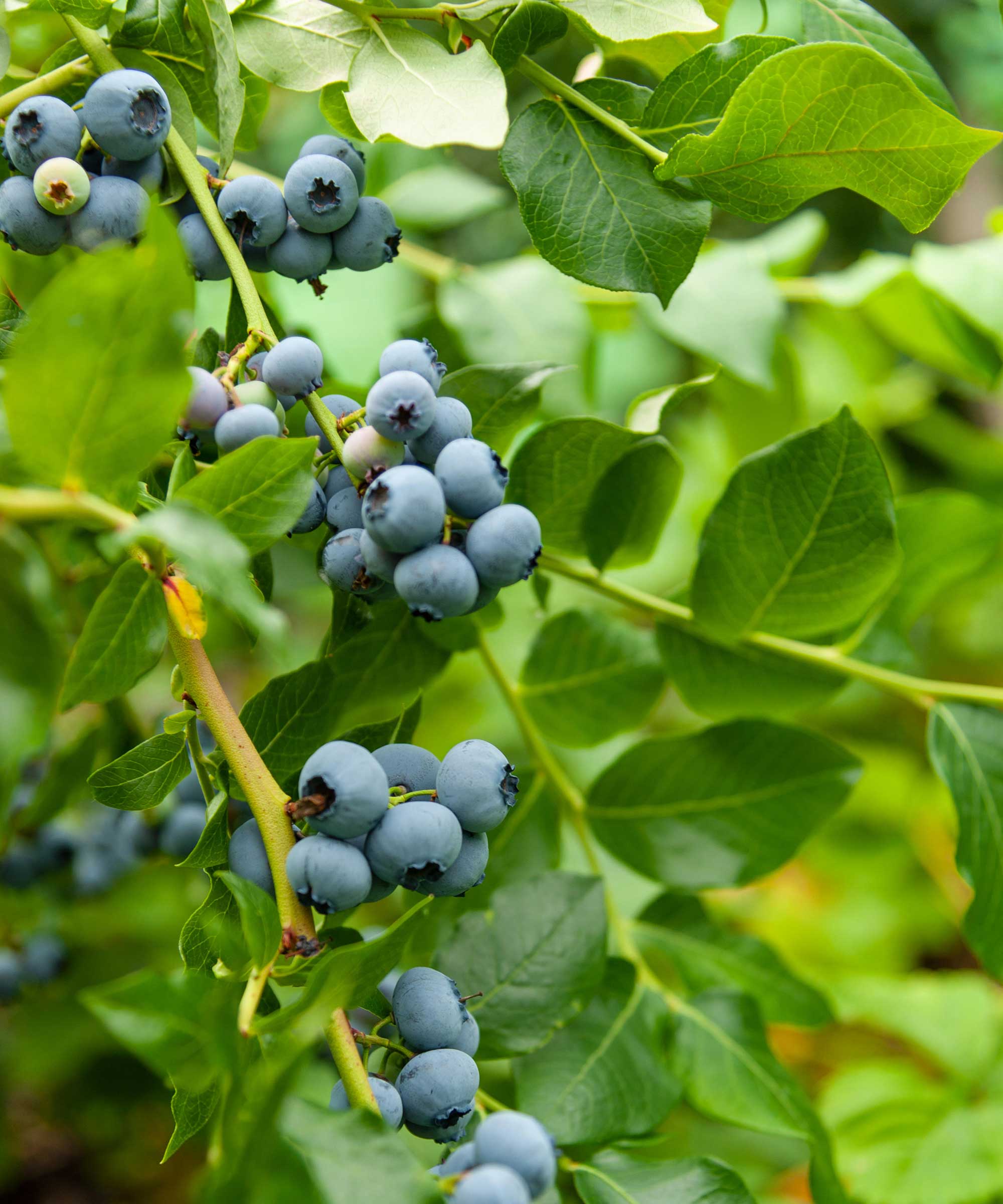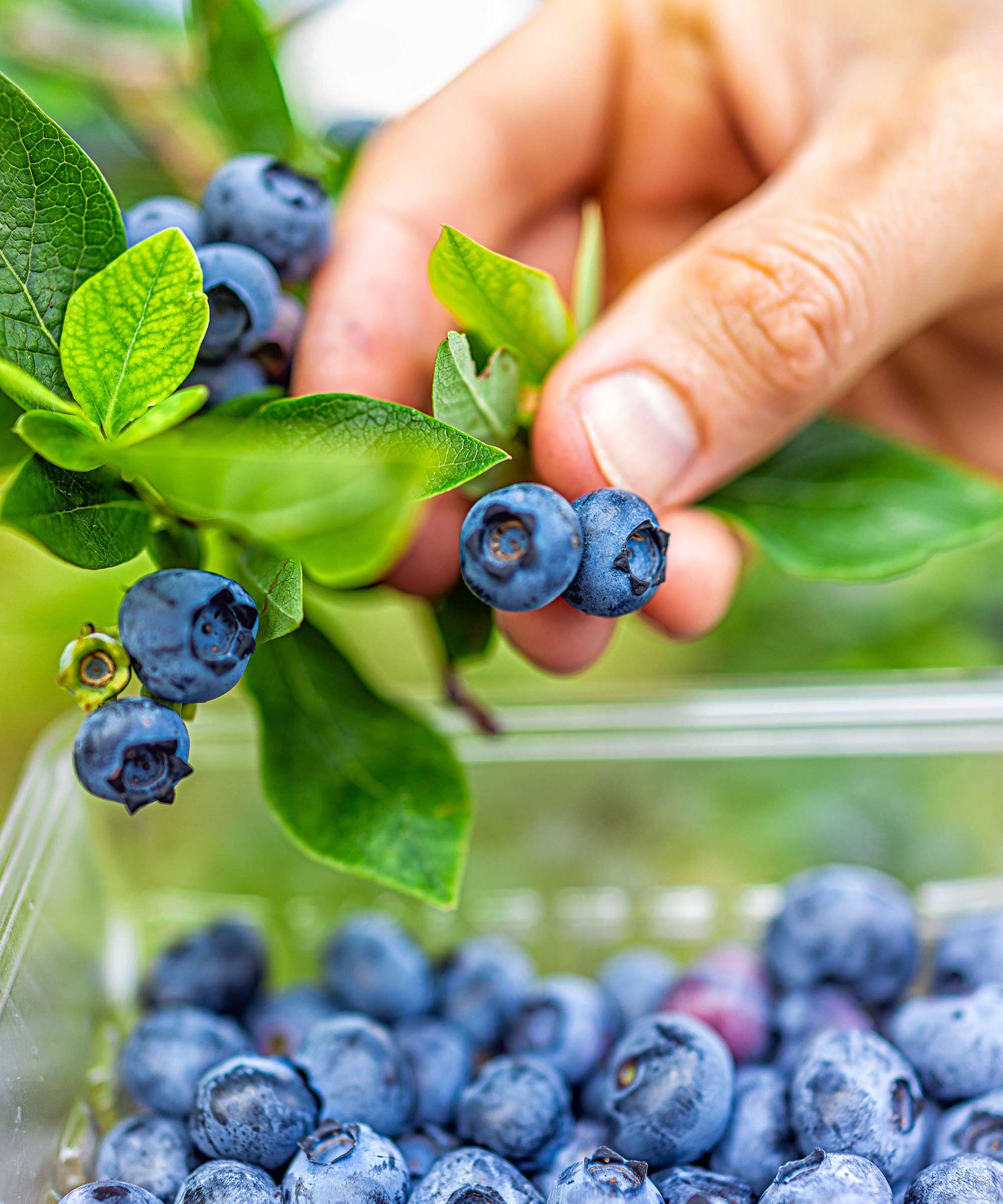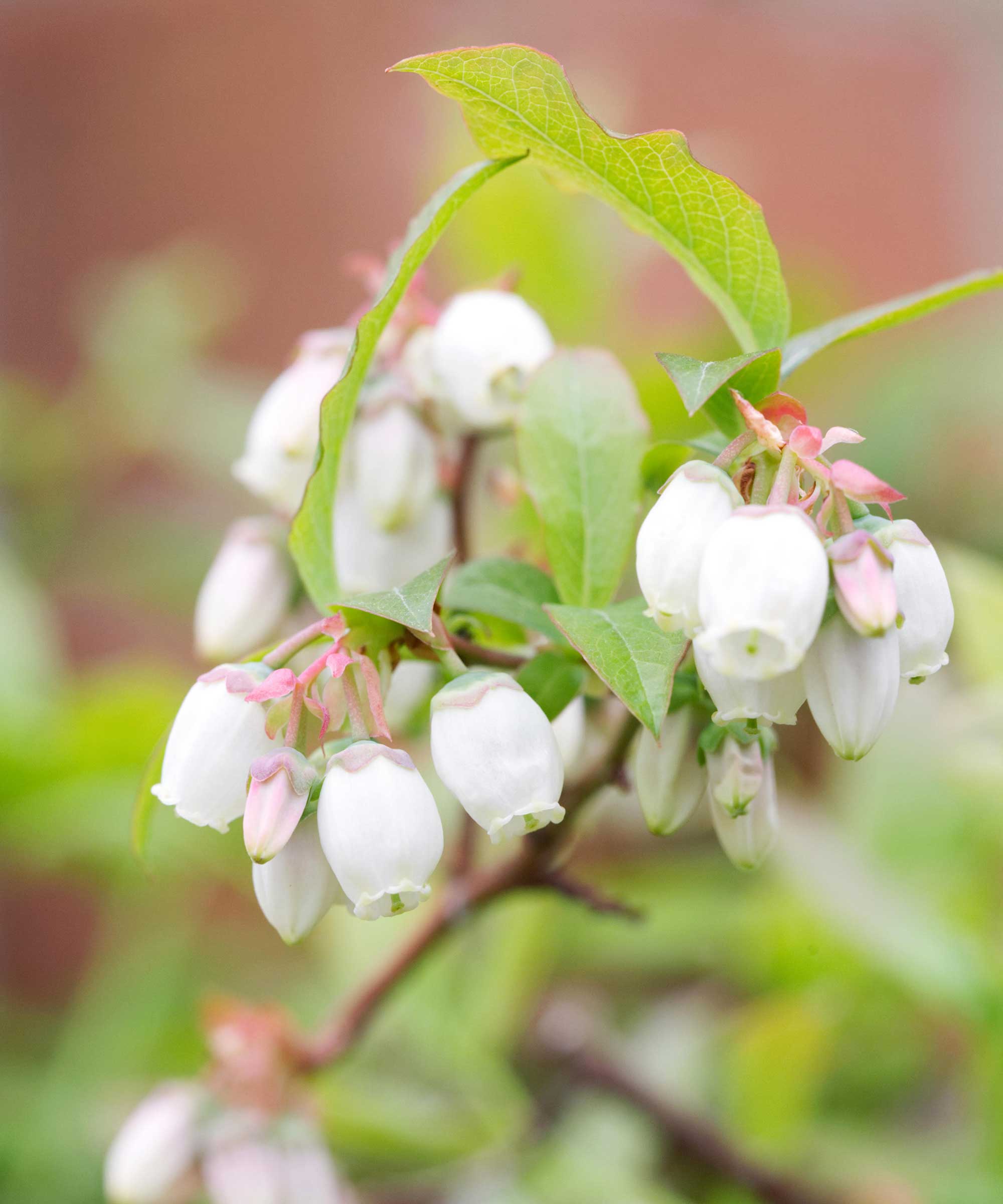
Blueberries are a delicious fruit and full of nutrients, and it's fun to grow them at home. They can be planted in the ground, but as compact plants, they also do very well in pots. Not only is this ideal for smaller outdoor spaces, but it's also the best approach for backyards with alkaline soil – these plants thrive in an acidic environment and it's easy to offer this in pots by using ericaceous compost.
Plant blueberries in spring or in the fall, into a container with a diameter of at least 12 inches – this should accommodate the plant for at least a couple of years. Add broken crockery at the bottom of the container to improve drainage. Ensure they get plenty of sun and are relatively sheltered.
'Though one blueberry will crop by itself, more berries will set if bushes are cross-pollinated by a different variety of the same species,' says Lucy Chamberlain, a fruit-and-veg-growing expert. It's not just the fruit that these plants offer – 'Some varieties have amazing fall leaf color in rich tones of orange, yellow, red and burgundy,' she adds.

Caring for blueberries in pots
John Negus, a gardening expert, suggests nourishing blueberries with an ericaceous feed. 'Containing iron and manganese for strong healthy growth and flowering, it’s ideal for all acid-loving plants.' Apply it monthly throughout the growing season. This is usually from around April to September.
These plants like their soil to be moist but well-draining. Ideally, use harvested rainwater to help maintain the acidic soil conditions they need.
'Fruits ripen over long periods, so pick every few days for the best flavor; they should come away in your hand,' says Lucy Chamberlain. Watch out for aphids, and treat them accordingly.
Pruning blueberries is unlikely to be necessary for the first few years, but after that, you can give them an annual trim when they're dormant.

Repotting a blueberry bush
You can repot a blueberry every two years or so. In the fall, when temperatures are mild, is the best time to repot them. John Negus shares his step-by-step guide.
- Tap the blueberry bush carefully from its pot. You'll need a new container around 8in greater in diameter.
- Cover the drainage hole in the new pot with crocks before adding 4in of ericaceous compost. Then sit the plant’s root ball on it.
- Gently firm more compost around the roots until it is 2in below the pot rim. This allows for watering.
- Next, stand the pot on ‘feet’ to ensure that surplus water drains away.
- Finally, cover the compost with a thin layer of gravel or slate chippings.

FAQs
What are the best varieties of blueberry plants for containers?
While most varieties of blueberries can be grown in containers, some are particularly well-suited due to their compact size. Try 'Sunshine Blue' (available at Burpee) which grows to only 3ft and has purple foliage in the fall. 'Patriot', also at Burpee, is another good choice with fiery-colored leaves in the fall and an early-season crop of large fruit.
Do you need to protect a potted blueberry bush in winter?
Some blueberry bushes are hardier than others, but unless you only get very mild winters where you live, all will appreciate a bit of help over the colder months. Protect the plants from frost by putting them somewhere sheltered, such as a shed, when low temperatures are forecasted, or by wrapping the pots in bubblewrap or horticultural fleece.
Spring flowers can also be protected from late frosts with a double layer of fleece, says the Royal Horticultural Society.
As long as you keep their soil acidic and don't let it dry out, blueberries are an easy plant to grow and will reward you with a delicious harvest. Why not have a go and add them to your container vegetable garden this year?







